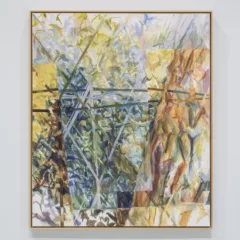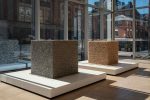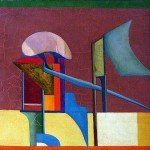Post by Minna Dubin
At the enthused insistence of my new in-laws, I went to American sculptor Tara Donovan’s first major museum survey show, at Cincinnati’s Contemporary Arts Center. I am glad I did. Her work is both huge and small; each piece a form made up of tiny manufactured objects. The first one that really hit me was a white undulating cloud-like wall. As I walked from one end to the other, the cloud gave the illusion of movement, with shadows increasing and decreasing as I moved.
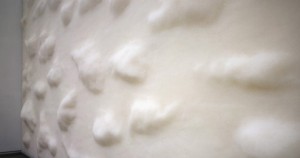
It reminded me of the effect of psychedelic mushrooms, how a flat perfectly mundane surface all of a sudden has movement and texture, how objects seems to breathe. Donovan’s cloud is like that. I went closer to investigate this amazing white organism, only to discover it is made of a kajillion drinking straws, that are different lengths, making hills and valleys, creating shadows and light tricks.
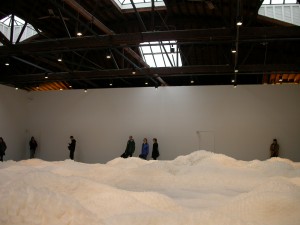
Next, a crystal-looking stalagmite-type of formation caught my eye. As the viewer, I found myself involved in the art. Each piece was a mystery. On the first far-away glance, each piece is something natural, like a cloud or bubbles in a dark pool. The viewer is intrigued to come investigate, to break the visual illusion and figure out what each piece really is. On closer inspection I found out the stalagmite formation was really made up of clear plastic buttons, which somehow were giving off the illusion of being a light crystal pink color. Again Donovan plays with light to create a natural aura to man-made items. In the depths of the buttons, the coloring is darker, which (I surmised with my mystery-cracking skills) must be a result of the gray floor beneath, but as the button towers get higher and narrower, they become lighter, whiter, translucent, due, I think, to the white walls and the lights above.
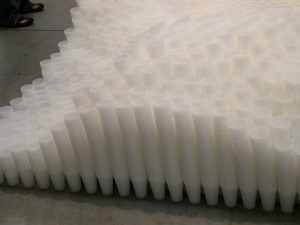
Donovan’s is the kind of art that makes me say, “This woman is crazy!” Thousands of buttons, straws, toothpicks, Styrofoam cups, etc. The sheer mechanics of it are mind-boggling. But the result is complicated and more than just interesting. It’s fascinating.
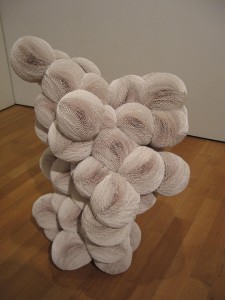
Her work plays with nature v. humans. The art reminds me of high school chemistry, seeing organisms in a petri dish, and the way they multiply. Donovan creates the illusion of natural growth, playing with movement and duplication, and how objects (even manufactured ones) have a tendency to attract to or repel one another.
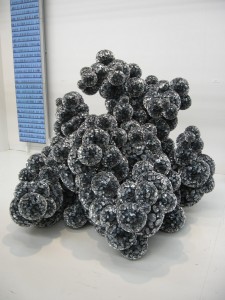
And one last very cool and worthwhile detail to this show is that, as you roam around looking at the exhibit, you can use your cell phone to call (513) 297 1262 and then punch in numbers 1 through 9 followed by the pound key to hear Donovan talk about each piece. After the show, I gushed to an employee at the reception area about Donovan’s work, and she gushed back, “I know, sometimes I even call the number when I’m at home.” You can too!


